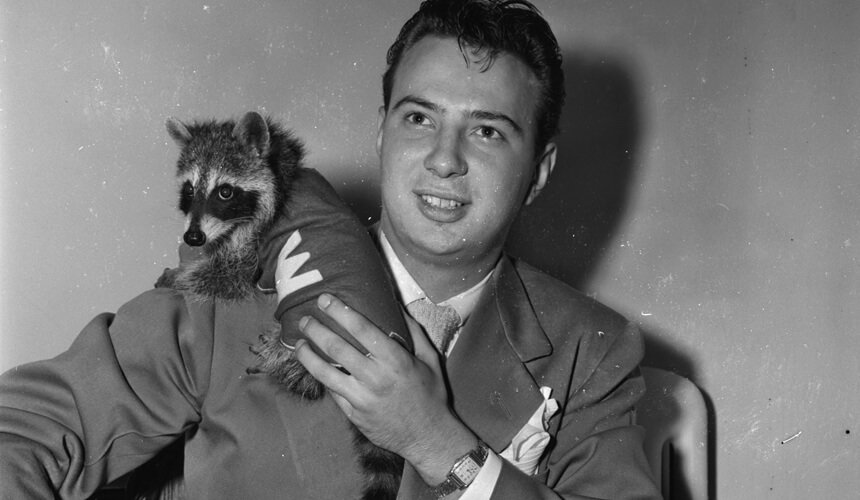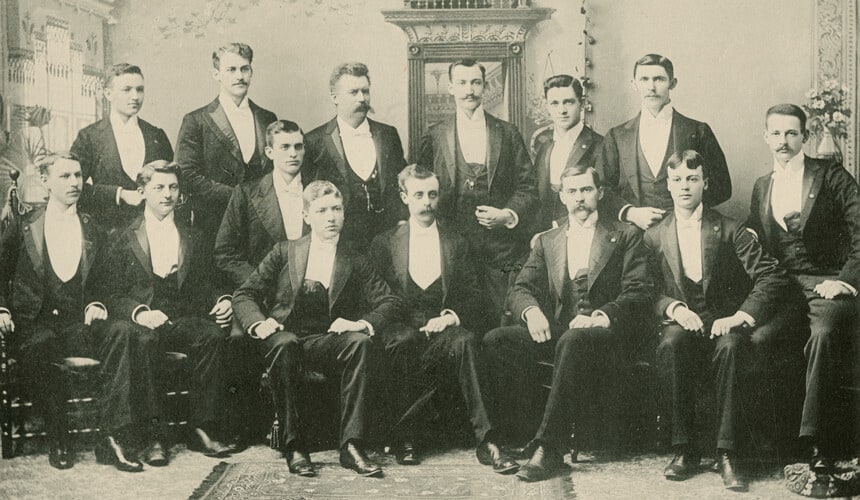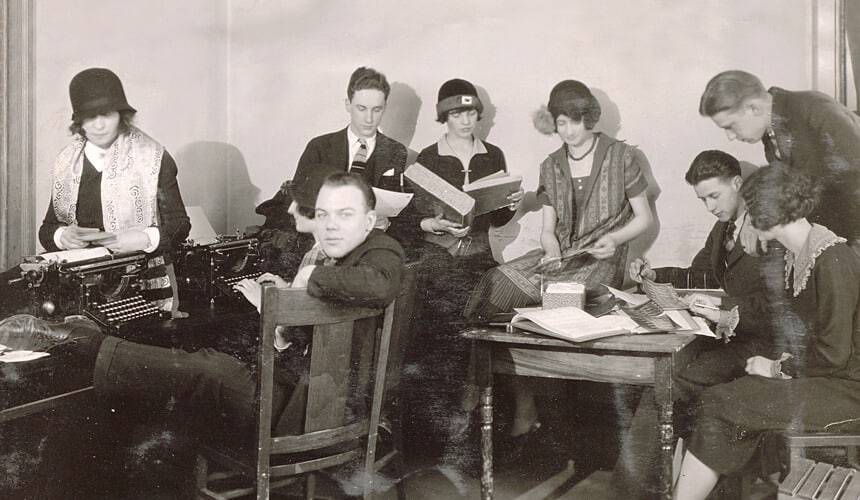The Badger, 1890
Badger Yearbook: UW Student Snapshot
For more than a century, the Badger yearbook has played a critical role in preserving University of Wisconsin history by compiling a year-in-the-life snapshot of campus.
Its staff is responsible for documenting student spirit and major events — wartime support and protest, campus visits from presidential candidates and celebrities, and Camp Randall’s biggest legends. The hardbound books are both a personal keepsake and an archive for future generations.
Through the Badger, we can trace the evolution of fashion and hairstyles; music and pop culture (writers often chose song lyrics to express the campus mood); and athletics during good times (nine Rose Bowl appearances) and bad (the pre-Alvarez lean years).
Although camera technology has certainly improved since 1892 (when the Badger first featured photos instead of sketches and cartoons), the iconic subjects never change: Bascom Hill, the Memorial Union Terrace, and State Street; Homecoming, Halloween, and Humorology; the school year from the first day of class to finals.
The first yearbook published by the UW — in April 1884 — was called Trochos (the Greek word for “wheel”). Its second edition came out in 1887, and in February 1888, the annual was renamed Badger.
Each edition is a unique fingerprint of its staff members, reflecting the times in which they and their classmates lived. World War II patriotism gave way to more frivolous fun in the 1950s. Through the turbulent ‘60s and ‘70s, students reflected cultural and political changes by replacing the book’s traditional chapters and cheerful copy with artistic photography and poems.
Despite a few publishing hiatuses, the yearbook celebrated some big milestones in the 21st century. The 2006 Badger was the first edition with a full-color photo gallery. And the staff honored the yearbook’s 125th anniversary in 2009-10 with a commemorative edition.
That year, editor-in-chief Sarah Ripp BFA2011 remarked, “In our 125 years, the technology may have created new production obstacles, but the great friendships, traditions, and Badger pride are forever established in the same spirit that was held in 1885.”
 44° F
44° F

